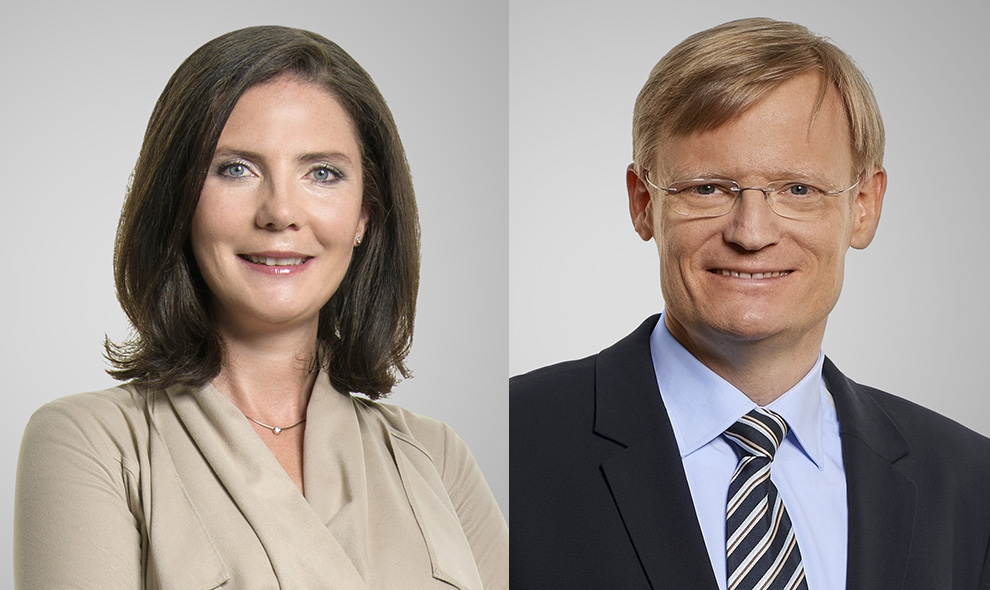The European Commission drafted and approved a plan for Horizon Europe to raise EU science spending levels by 50% over the years 2021-2027. Below, we speak to two experts that discuss what Horizon Europe 2020 is all about and what it could mean for inventors and investors, alike.
What is new in Horizon Europe?
Significant new changes and improvements have been introduced into the newest Horizon Europe 2020 programme as compared to its forerunner.
The thematic programme parts "Leadership in Enabling and Industrial Technologies" (LEIT) and "Societal challenges" are now structurally combined in the programme area: "Global challenges and European Industrial Competitiveness". In addition, six areas (“Clusters”) have been created which bring together the 13 thematic areas of Horizon Europe 2020.
The European Innovation Council (EIT) has been institutionalised and a “Strategic Planning Process” and “Missions” have been introduced.
Partnership initiatives have been reduced from around 120 under Horizon Europe 2020 to now fewer than 50.
In addition, Horizon Europe and the EURATOM research and training programme are working towards effective and operational synergies with other EU programmes and EU mechanisms.
What does it aim to achieve?
The primary purpose of the new changes is to promote knowledge and innovation-driven society, build a competitive economy and create the conditions for sustainable development. Horizon Europe will play a vital role in the much needed digital and green transformation. It will also play its part in implementing the policy guidelines of the European Commission.
Through institutionalisation, innovation will translate into tangible results faster and bring about growth and employment.
Let us now take a closer look at certain of the changes:
a) Strategic planning process
The introduction of the strategic planning process is primarily intended to achieve continuity and coherence of the funding mechanisms. The Strategic Plan sets out the basis for Horizon Europe and is actually composed of two separate plans. The first plan will initially cover four years (2021-2024) and is followed by another plan for the remaining three years of the programme.
The Strategic Plan for the years 2021 to 2024 defines four so-called “Key Strategic Orientations”. These four key strategic orientations” form a crucial part of the work programme until 2024.
The missions and partnerships that have been introduced are an essential part of the first Strategic Plan.
b) Missions
The missions are divided into five thematic areas (“Mission Areas”):
- Adapting to climate change, including societal change
- Cancer (oncology)
- Healthy oceans, seas, coastal and inland waters
- Climate-neutral and smart cities
- Soil health and food
These five "mission areas", which are embedded in the Strategic Plan, are intended to address the ambitious goal of rising to current societal challenges through interdisciplinary innovation. The term “mission areas” was conceived by the Apollo 11 mission in the 1960s. Predicated on this concept, the missions are clearly limited in time to a maximum of 10 years and have ambitious goals. The missions are intended to exploit synergies with other policy instruments of the Framework Programme and cover all activities from basic research to studies carried out prior and subsequent to market launch.
c) Partnership initiatives
Coordination between the individual partnerships and interaction with other instruments of the Framework Programme has been improved to take into account the important contribution of the partnership initiatives towards the implementation of policy priorities in the EU. Transparency is to be imposed on the partnerships with respect to the circle of participants, the scope of activities, and the results. The aim is to simplify and rationalise the European partnership landscape, the main emphasis being on the impact it has.
d) Synergies
The idea behind synergy with other EU programmes and mechanisms is to achieve a more efficient implementation of common research objectives and results. Synergies also promote a more rapid uptake of innovation concepts.
Synergies include the Connecting Europe Facility (CEF), Digital Europe, Erasmus+, LIFE-EU funding instrument for the environment and climate action, Innovation Fund (European Emissions Trading System, EU ETS) and InvestEU.
How will it differ from the institutionalisation of the European Innovation Council (EIC)?
Supporting innovation at the EU level provided by the European Innovation Council (EIC) is the principal raison d’être of Horizon Europe. Through institutionalisation, innovation will translate into tangible results faster and bring about growth and employment.
Previous funding instruments formerly part of Horizon 2020 have been outsourced to the InvestEU Programme. These include indirect support via guarantee funds and counter-guarantees, as well as access to credit or equity facilities.
Companies with registered offices in an EU member state or in an associated country are eligible to apply.
What is new is that the European Innovation Council (EIC) is bringing together the main EU funding instruments: EIC Pathfinder, EIC Transitions, EIC Accelerator and EIC prizes.
The EIC Pathfinder supports visionary and high-risk projects that are still in the early stages of development. The primary goal is to tap into breakthrough ideas and open up new areas of investigation having a clear technological objective. This so-called “proof of concept” is underpinned by science-based evidence and should verify the innovation potential of ground-breaking new technologies. EIC Pathfinder’s targeted audience comprises universities, research institutions and high-tech companies.
EIC Transition is designed to take results from EIC Pathfinder into a higher level of development by refining and optimising the technology and the business idea. The task of further development will go to small and medium-sized enterprises, start-ups, research institutions and universities. The aim is to achieve commercial viability with the help of the EIC Accelerator.
The EIC Accelerator is aimed at small and medium-sized enterprises that develop particularly high-risk innovations with strong market potential. A distinguishing feature of these companies is their high growth potential as well as their presence in the European and international markets.
EIC prizes are the final EU funding instrument to reward schemes focused on solving societal challenges through pioneering technological innovation.
Who are the potential beneficiaries of this initiative?
Companies with registered offices in an EU member state or in an associated country are eligible to apply. According to the Partnership Agreement concluded between the European Union and the United Kingdom on 24 December 2020, the United Kingdom is also considered an associated country.
Further eligibility is oriented towards the Horizon Europe pillars. Within the framework of scientific excellence, funding is primarily provided for science-driven basic research and includes individual researchers, consortia and research infrastructures, the latter being larger research institutions with certain characteristics that distinguish them from other research institutions.
The second pillar (Global Challenge and European Industrial Competitiveness) directs funding towards areas that include health, culture, inclusive society, civil security, digital, industry and space, climate, energy, mobility and bioeconomy.
Innovative Europe is supported by the third pillar. In particular, innovative products, processes and services will be eligible for support.
Experience shows that such projects often raise a large number of legal questions and may contain not a few pitfalls, which need to be detected and addressed as early as possible.
How do you see this initiative impacting your work as an attorney?
As a boutique IP firm specialising in legal advice to clients engaged in research and technology, we are pleased that European research and development will receive more funding in many important areas through H2020.
Having in mind the objectives of H2020 and at the same time the many potential legal pitfalls, we are glad to advise and support our clients to enable them to derive optimal benefits from the funding opportunities and to effectively implement and exploit the results of their research and development work.
Experience shows that such projects often raise a large number of legal questions and may contain not a few pitfalls, which need to be detected and addressed as early as possible. This starts with initial advice on funding opportunities and the application criteria, followed by the drafting of development, collaboration and in some cases joint venture contracts. Increasingly, EU competition rules have also to be considered and, of course, the R&D outcomes must be protected (for e.g., by registering IP rights such as patents and utility models, not forgetting know-how) and regulating the respective exploitation rights between the parties involved.
Furthermore, in many cases, the resultant products need to be approved and marketed. In an increasing number of industries, most particularly in life sciences, there are a multitude of regulatory requirements to be observed, already at the development stage and even more so when launching and distributing a product. Further in this regard, national and European law has grown even more complex in recent years and requires in-depth legal expertise and far-sighted advice based on decades of experience.
If successful, what could Horizon Europe mean for clients/inventors?
H2020 makes additional financial resources available to companies for R&D. In addition to direct funding for research and development projects, Horizon Europe also provides at the very least a degree of foreseeability for applicants. The priorities and objectives of European research and innovation policy are set out in four key items in the first Strategic Plan (2021-2024). These key items provide companies with a framework within which to drive forward their innovations. This foreseeability can be a benefit in long-term planning and in this way be a help to applicants in the proper preparation of applications.
Creating new perspectives and opportunities strengthens the European Research Area (ERA). Innovation is more valued, which heightens the competitiveness of the European economy internationally and at the same time, underlines general political goals such as environmental protection and health care as a common goal of the European community of states.
Maiwald Patentanwalts- und Rechtsanwalts-GmbH
Elisenhof, Elisenstraße 3 | D-80335 München
T +49 (0)89 747266-0 | F +49 (0)89 776424
www.maiwald.eu
Marco Stief
Marco Stief is a partner and the head of legal at Maiwald. He is an internationally recognised expert in the field of intellectual property and has extensive experience in advising clients in R&D projects and the negotiation of a wide variety of technology-related contracts, in particular cooperation, R&D and licence agreements. Marco also regularly advises companies on complex IP transactions and in the field of patent infringement litigation.
For many consecutive years, IAM has listed Marco among the top 300 "World's Leading IP Strategists" as well as among the top 1000 “World’s Leading Patent Professionals”. He is mentioned in the German JUVE-Handbook as one of the top 8 German patent lawyers under the age of 50, emphasising that his clients, in particular, praise his pragmatic approach. In 2018 Marco was admitted to the circle of the best 6 patent litigators in Germany by Who is Who. The German “WirtschaftsWoche” praised him as one of the best lawyers for IP law in Germany, and Legal500 recommends him as “pragmatic, fast, results-oriented and always meeting the highest professional standards”.
Marco teaches IP law at the University of Dresden as well as pharmaceutical, patent and international contract law at the University of Marburg.
Eva Ehlich
Eva Ehlich is a partner and managing director at Maiwald. She is an internationally well-known and esteemed German and European patent attorney focused on overall IP strategies including drafting applications, building and prosecuting large worldwide portfolios, enforcing and defending patents as well as establishing and implementing freedom-to-operate strategies. She has also passed the US patent agent examination and has global prosecution experience, which allows her to advise for global strategies in particular in the pharmaceutical sector.
Several times, Eva got honoured and listed as “IP Star” by Managing International Property (MIP) magazine as well as being recommended as “Germany’s Best Lawyer” by Handelsblatt and as "Frequently recommended Lawyer" by JUVE, Legal 500 Germany and Legal 500 EMEA, the latter in 2020 mentioned Eva as “stands out due to the rare ability, to combine thoroughness and pragmatism. She delivers excellent results". Last year, Eva was among the top 1000 “World’s Leading Patent Professionals” by IAM (Intellectual Asset Management).
Over the past 15 years, Eva has built a very stable group of attorneys that constantly work with her, currently five attorneys and two trainees. In particular, she takes pride to encourage and promote female attorneys.





















